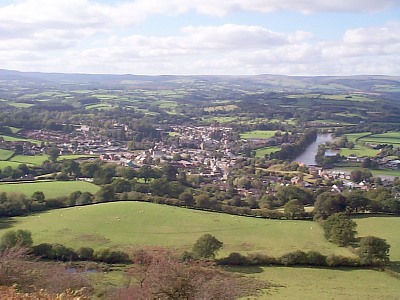Builth Wells (or Llanfair-ym-muallt) was originally known as
Buallt/Beullt/Bueld, corrupted over the years to Builth, and the Wells affixed
when the town made the best of the two health wells to the west of the town and
became a spa town. Formerly part of the old county of Brecknock, it was included
in a new larger Unitary authority, and is now in the county of Powys.
The Welsh name Llanfair, is now said to be The Church of St Mary (A Norman
dedication), the Muallt is not quite so easy, with a couple of interpretations
depending on which of the original names you use, bu is [wild]
ox/cattle, the allt/ellt/eld means wooded slope or hill, so we end up
with [wild] ox on the wooded slope. With its origins dating back at least
to the time of Llewelyn the Last (Llewelyn ap Gruffydd, the last native prince
of Wales), Builth has seen many changes. An early record mentions a Buelt in the
10th century. In the 11th century it was a motte and bailey castle later a
market town, a spa town and latterly a tourist town. The present town still has
many assets, the local cottage hospital seems under constant threat of closure,
but keeps going, strongly supported by people from the town and area. Banks,
post office, a dentist, doctors surgery, ambulance, police and fire stations,
churches, non-conformist chapels, garages, livestock market, supermarket, pubs -
most of the facilities that keep a town alive. Perhaps its main asset is its
location, being central its affords good access to most areas, and it is
surrounded by beautiful countryside.

This view of the town of Builth is
taken from Garth Hill (or Garth Bank) to the east of the town) and shows
the town and the river Wye